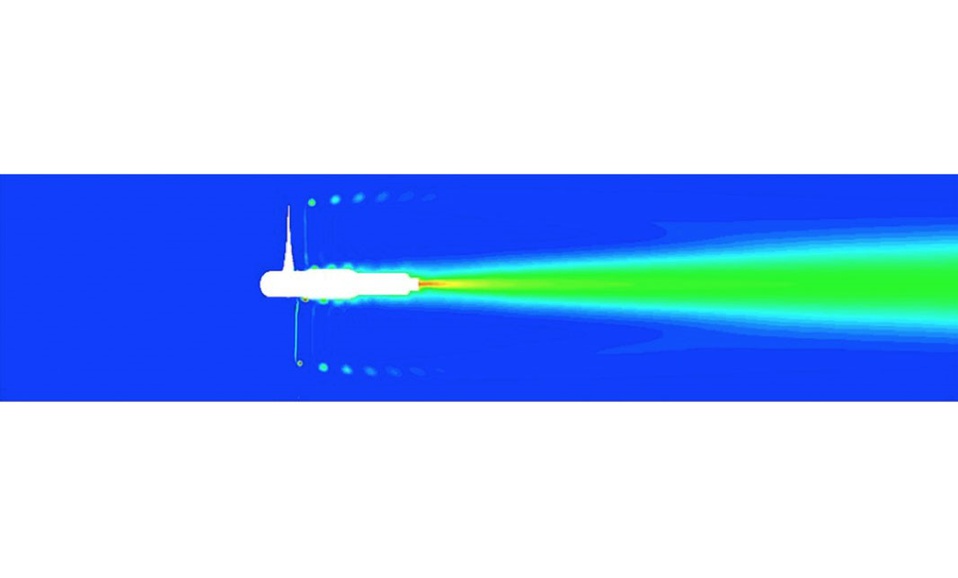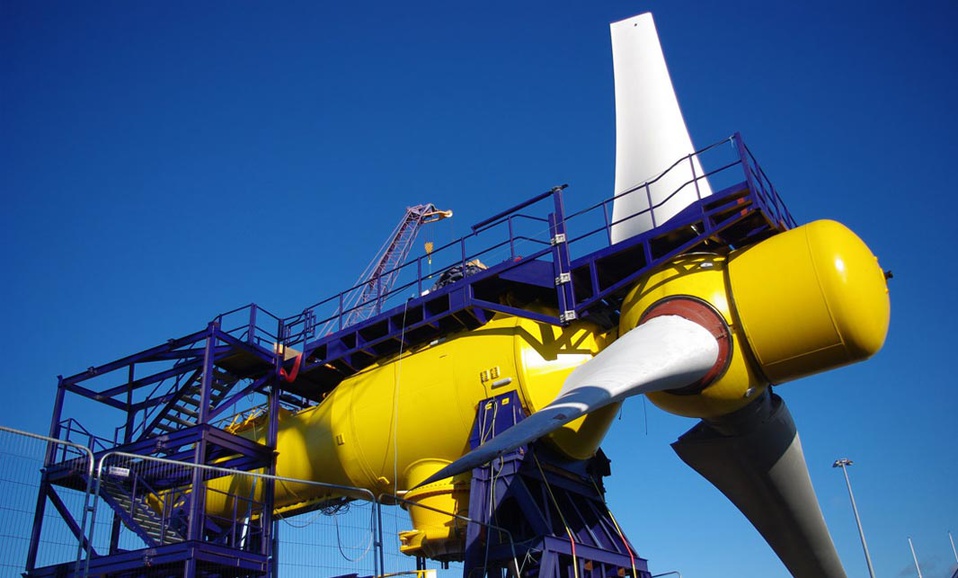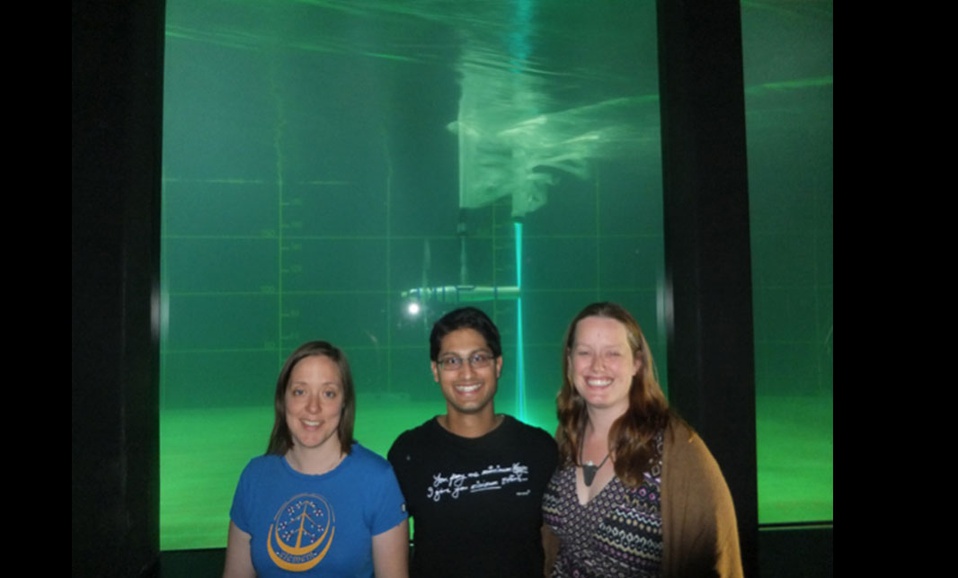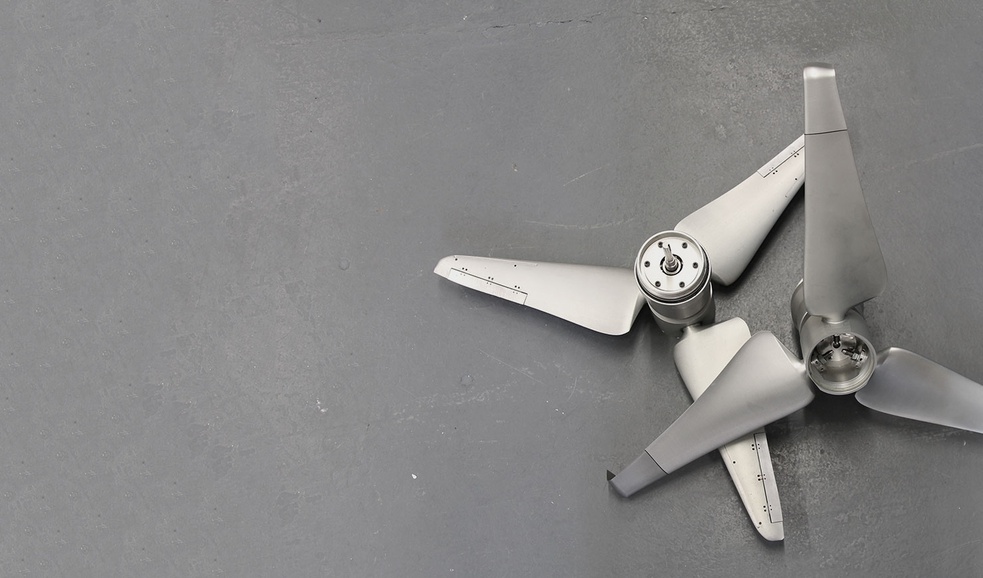Overview
The tidal power group aims to transfer the Whittle Lab's 40 years' worth of expertise in turbomachinery aerodynamics to the marine environment, with particular emphasis on understanding where the major losses arise, and how the blades respond to unsteadiness in the incoming flow.
Research by the tidal power group falls into two categories: hydrodynamic design of turbine blades, and unsteady load modelling and mitigation. A substantial project has been undertaken to understand where the major sources of losses are generated in a tidal turbine and then to mitigate them by designing more hydrodynamically efficient blades. However, fluid mechanics is is only part of the problem: the trade-off between efficiency and mechanical complexity is also being explored by the group, in particular the use of stall-controlled blades to eliminate the need for variable-pitch mechanisms.
One of the major issues faced by tidal turbine designers is the fluctuating loads experienced by devices in the sea. The tidal power group has been working on improved models to better predict the unsteady loads generated by incoming turbulence and waves. This will enable more accurate fatigue calculations at the design stage. Further to this, load alleviation mechanisms are being designed and tested; these will enable survivability within harsh marine operating environments.
20%
PORTION OF UK'S POWER THAT CAN BE PROVIDED FROM THE TIDES
Accurate measurements of the incoming flowfield are vital if turbines are to be designed that are robust enough for the environment in which they operate without being over-engineered. The capabilities and limitations of existing devices have been studied and a novel probe for unsteady flow measurements is being developed.
Associated Team



